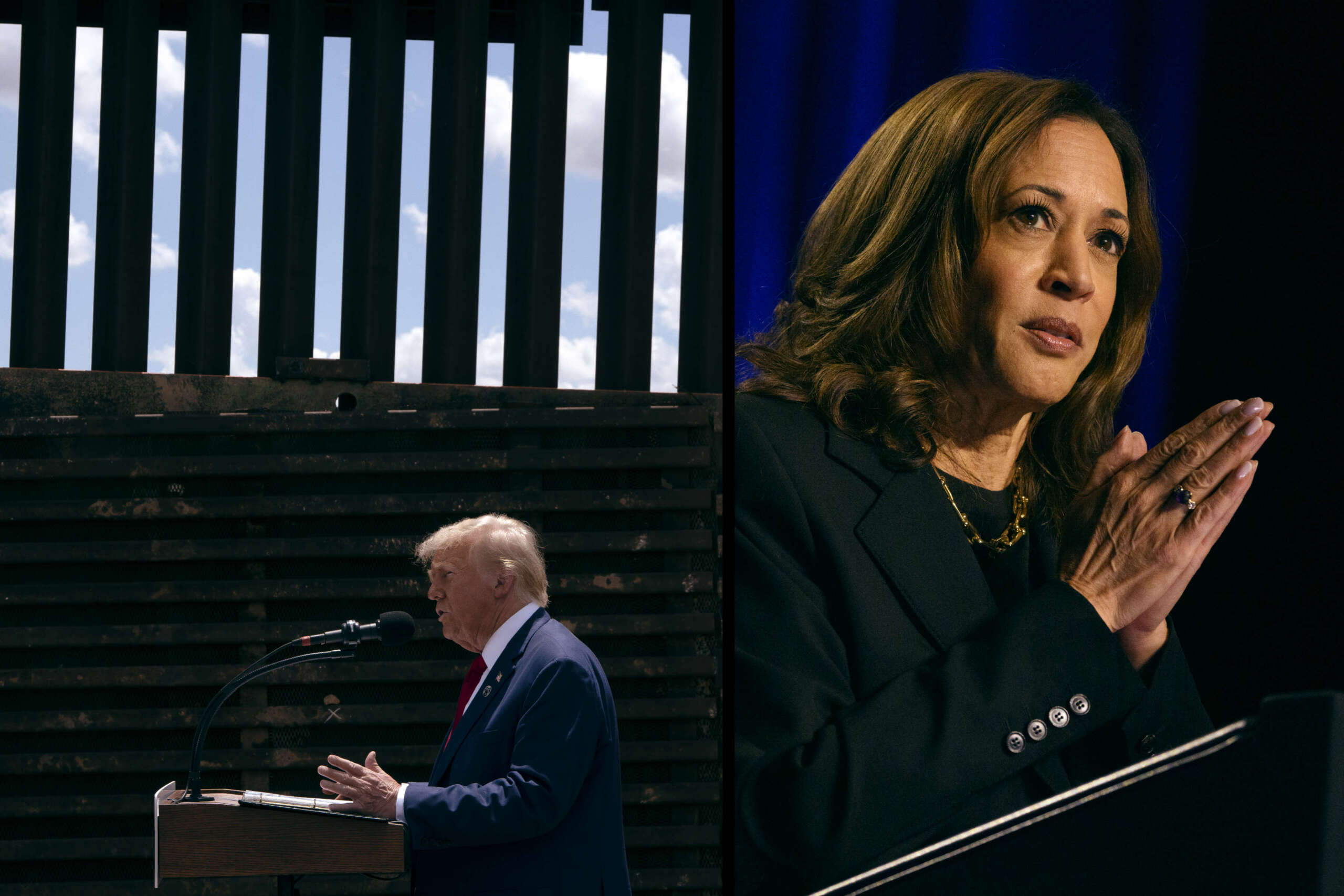While the majority of fentanyl is seized at the U.S.-Mexico border, 93 percent of those seizures happened at legal crossing points last year. More than 86 percent of people sentenced for trafficking fentanyl in 2023 were U.S. citizens, and almost all fentanyl is smuggled for U.S. consumers.
Democrats’ and Republicans’ shared focus on fentanyl trafficking at the U.S.-Mexico border as the sole root of the overdose crisis is dangerously myopic. It fails to address the myriad causes or advance any much-needed solutions. Indeed, the U.S. is grappling with a serious public health crisis, as the country faces more than 100,000 deaths per year from drug overdoses, two-thirds of which are due to synthetic opioids like fentanyl. Twenty-seven thousand pounds of fentanyl were seized at the border last year, up from just 4,600 pounds in 2020. But militarizing the border — and promoting rhetoric that demonizes immigrants — will not save any lives.
Experts caution that it is difficult to attribute such data to any singular source; we need more studies over a longer period of time to determine what’s driving the plunge. Still, we can look to several recent developments as possible culprits: In December 2022, Biden signed the bipartisan Mainstreaming Addiction Treatment (MAT) Act, which removed the bureaucratic hurdles facing doctors who need to prescribe buprenorphine for opioid addiction treatment. Prior to the MAT Act in 2020, less than 6 percent of doctors were allowed to prescribe buprenorphine. Meanwhile, a naloxone nasal spray that can reverse opioid overdoses and save lives was approved to be sold as an over-the-counter medicine in March 2023. It has since become much more readily available.
This is a good start, but doctors are still calling for increased funding for addiction treatment and harm reduction services. Rural areas, as well as Black and Native American communities, especially face substantial barriers to accessing quality health care. Currently, Congress is considering a bipartisan bill, the Modernizing Opioid Treatment Access Act, which would expand access to methadone, a prescription drug used to treat opioid addictions. Unlike in several European countries, methadone is only obtainable in the United States at designated opioid treatment clinics and must be taken on-site — creating an unnecessary hurdle for those who live miles away from the closest clinic. Addiction recovery advocates also point toward the need for expanded telemedicine options, mobile methadone clinics and robust drug education campaigns as necessary tools to fight the overdose crisis.



Then address the root cause of the demand as doctors recommend, not blame it on immigrants or immigration as if that will solve the issue
We are working on that. Portlands largest problems started with decriminalization and following that the fentanyl crisis boomed.
We’ve rolled that back as of 9/1 but it’s going to take time for enforcement. Looks like it is working though:
https://www.koin.com/news/portland/33-arrested-during-east-portland-police-mission/
33 arrests, 3 of them qualified for deflection programs, 1 declined and would rather be arrested.
That’s not addressing the root cause. Decriminalization wasn’t the issue. Not also providing free and readily available access to mental health and addiction social services was the issue.
Quotes
The problem wasn’t that there was no care, the problem was it was not mandatory.
Here’s how it “worked”:
You got caught with drugs, you got a $100 ticket.
The ticket was waived if you called a toll free number to ask about getting help.
You didn’t ACTUALLY have to enter treatment, all you had to do was call the number.
Of the 16,000 people ticketed, only 134 called the number. :(
There was no enforcement.
Of the folks who did get help, the help they wanted was needle exchanges and naloxone to continue enabling their addiction.
https://www.opb.org/article/2022/02/14/oregon-drug-decriminalization-measure-110-grants-treatment-recovery-services/
This is why 110 had to go away. But we’re less than a month in since repeal.
Yeah, that was also part of the problem. Not that they need to be forced or coerced, but they need incentives for engaging with the programs, like the fees being waived only if they stick with the program, and also a financial incentive to complete the program on top of that.
Yup. People here kept rolling out “But, but… Portugal…”
Completely ignoring the fact that Portugal had both positive and negative incentives to enter treatment. And socialized health care.
Oh, and they’re also re-thinking their program.
https://www.washingtonpost.com/world/2023/07/07/portugal-drugs-decriminalization-heroin-crack/
Because it is incredibly successful in Portugal. And no, they are not ‘rethinking decriminalization,’ I can’t find a single Portuguese or even European article to back that up, that NY Times Article is not good.
20 years of Portuguese drug policy - developments, challenges and the quest for human rights
How Portugal eased its opioid epidemic, while U.S. drug deaths skyrocketed
Why Portland failed where Portugal succeeded in decriminalizing drugs
From Portugal to Portland: How Drug Decriminalization is Playing Out in Two Different Countries
New drug law now in force - Portugal News
Crime Rates in Portugal: Is Portugal Safe?
Drug decriminalisation: grounding policy in evidence - The Lancet
B/s that this issue began in 2021 after we decriminalized drugs via ballot measure in 2020. This issue started with people cooking meth out in the sticks here back in the 2000s and has flipped flopped between that and opiods since then in a cat and mouse game between dealers and the law.
Throwing these people in jail over the last 20 years hasn’t fixed anything, and the state refused to even implement M110 by funding treatment centers before pointing to it and saying “it’s not working!” Now they’ve repealed it, and nothing has changed.
The meth problem has been around for ages, and while the new forms of meth have also been a problem, we didn’t have open air fentanyl drug markets before 110.
No just open-air heroin markets and before that open-air Oxy/Vicodin/Percocet markets. Nothing has changed in decades except the brand name of the drug.
Not really, not to that degree. You didn’t have people taking over buildings in downtown to set up drug markets before 110:
https://www.oregonlive.com/crime/2023/04/portland-police-clear-out-washington-center-open-air-drug-market-in-early-morning-mission.html